Somatics is a field of study and practice in the overlapping realms of bodywork, movement, and psychotherapy. It deepens your body awareness though various movement, breath and attentional explorations and invites you to follow your internal experience,
"the body as perceived from within".
In ‘soma-psychology’, terms such as ‘soma’ or ‘somatic’ do not refer to the physical body, but to your own inwardly felt body, in particular your felt bodily sense how you are or the issue or theme that calls for your attention.
Which Body is it...
Somatics at Yoga Tree
Focusing Method
Focusing is a conscious interaction with our bodily felt knowing that can inform, clarify or surprise us with its insights into our life's questions and concerns.
Our body knows more than words could say and Focusing is a way of waking, deepening and fine-tuning our whole bodied listening and knowing.
Focusing can be integrated and applied to many areas of our life including problem solving, inquiring into health symptoms, personal and professional growth & spirituality, and all forms of creative expression.
Individual session: Booking
Group session: Booking
Which body is it with which we feel ourselves as ‘heavier’ or ‘lighter’ without our physical weight changing by one gram?
Which body is it with which we feel closer to or more distant from others irrespective of physical distance?
Which body is it with which we feel ‘warmer’ or ‘cooler’ to others independently of our physical temperature?
Which body is it whose ‘heart’ can make us feel heartened or disheartened, warm- or cold-hearted, heartache or loss of heart?
Which body is it with which we feel the ‘brightness’ or ‘darkness’, ‘tone’ or ‘colour’ of our mood?
Which body is it with which we can feel ‘uplifted’ or ‘carried away’, ‘sucked in’ or ‘trapped’, ‘stretched’ or ‘all over the place’,
open’ or ‘closed off’, ‘exploding’ or ‘imploding’ without our physical body moving or changing shape?
Which body is it whose ‘skin’ we can feel more or less at home in, whose boundary we can feel as ‘thick- or thin-skinned’, ‘open’
or ‘impervious’,‘edgy’ or rigid, porous, overly filled out and ‘fat’ or shrunk and contracted - without any change to
our actual skin surface or physical body size?
Which body is it whose inner tone can make us feel ‘dull’, ‘flat’ or ‘sharp’, and whose inner texture can make us feel ‘hollow’ or
‘empty’ inside, ‘shapeless’ or ‘spineless’, ‘solid’ or ‘airy’, ‘firm’ or ‘brittle’?
By Peter Wilber
Certainly not the physical body – the body as an outwardly perceived object. Rather it is the inwardly felt body – the subjective body
with which we feel ourselves and others. Like musical tones, our inwardly felt body can possess and combine any number of
sensual qualities such as brightness and darkness, lightness and heaviness, flatness and sharpness, clarity and dullness, as well as
diverse tone colours, textures and shapes. We are constantly bodying specific tonal patterns, felt meanings and sensual qualities of
awareness. For every way of experiencing our self goes together with a particular way of experiencing our body.
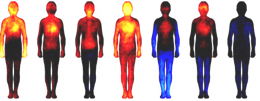
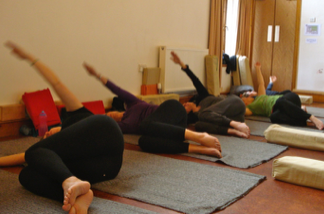
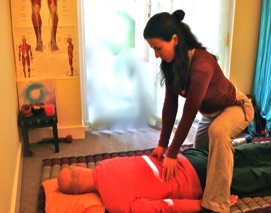
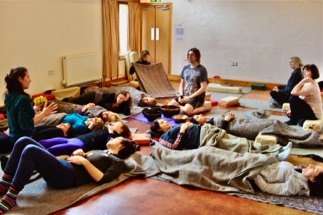
Micromovements
Light, easy, small, slow and smooth movements that wake our somatic sensitivity, increase the body awareness and unwind our habitually held tensions. Most of our Restorative and Yin yoga sessions are supported by this practice.
Trauma Releasing Exercises
Simple way of tapping into and unlocking our natural and instinctual mechanism of shaking off an excess tension. Most of us carry various patterns of contractions (physical, psychological) that we are not even fully aware of and which are stored up in our body tissues and over activated nervous system (stuck in old protective reflexes: fight, run, shut down). This often undermines our energy level, deregulates our natural rhythms of sleep, hunger, sexual arousal, impacts our health and mindset etc so the benefits of regular shaking practice are quite broad. TRE practice is part of our Restorative workshops and Saturday Yoga Immersions.
Individual session: Booking
Group session: Booking
Somatic Psychology
Movement Explorations
Bodywork
Thai Yoga Massage
Its combines techniques usually found isolated in the western physiotherapies including Trigger Point Treatments, Myofascial Techniques, Neuro Muscular therapy, and Manual Therapy among others. The combination of energetic and physical aspects is what makes Thai Massage unique and so effective
Myofascial Release
It's a mild and gentle form of stretching that has a profound effect upon the body. A slow gentle pressure allows the body tissue to reorganise without force, and release the body's unconscious holding and bracing patterns.
Individual session: Booking
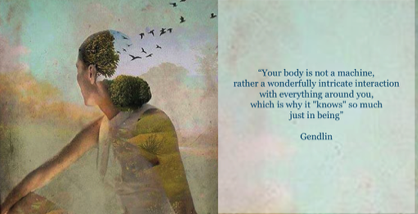
"First, feel your body. Your body can be looked at from the outside but I am asking you to feel it from the inside.
There you are. There, as simply put as possible, is your experiencing of the moment now. Notice, its always there for you"
G. Gendlin
Somatics as a specific movement system and philosophy was originally codified in the West in the 1970s by educator and researcher Thomas Hanna. His work - as well as that of some of his predecessors, including Moshé Feldenkrais - could be considered Western interpretations of Eastern philosophies and practices, including yoga, that work on a subtle energetic level.
Around the same time Gene Gendlin began forming his groundbreaking approach called Focusing, which created an opening and framework for engaging our bodily felt intelligence even more deeply and directly.
"Experience is a myriad richness.
We think more than we can say.
We feel more than we can think.
We live more than we can feel.
And there is much more still".
G. Gendlin
Somatics